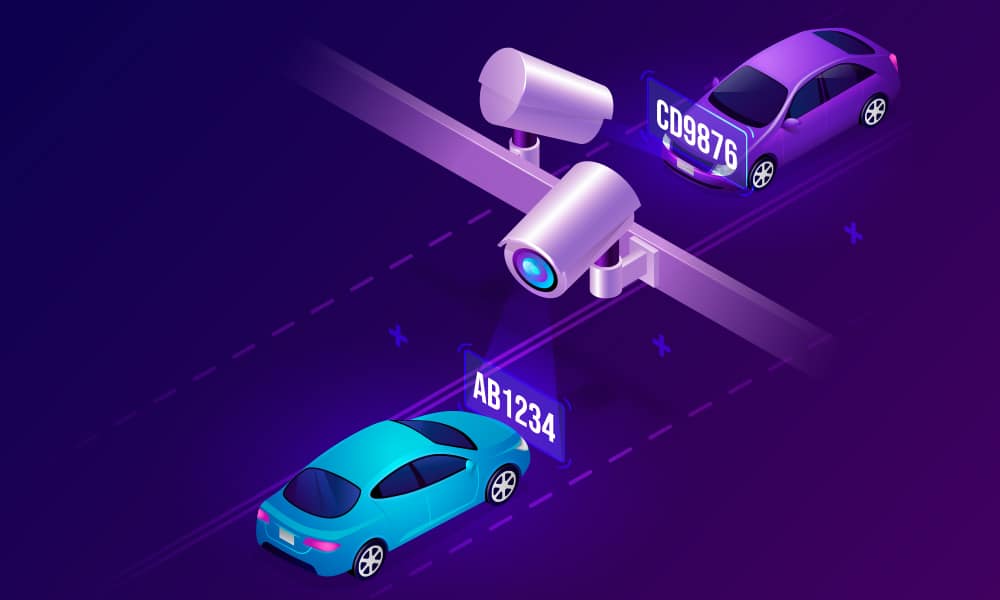
Over 275 million vehicles travel the roads every day. ANPR is an effective way to track and monitor them.
It works by capturing and analyzing license plate images for recognition. The data can reveal behavior patterns that may indicate criminal activity.
It can also speed up investigations by revealing the history of where vehicles have been. This information can lead to promising leads in high-risk cases.
Increased Traffic Safety
Automatic license plate recognition software turns captured images of license plates into alphanumeric data, allowing police officers to cross-reference this information with existing databases to find vehicles of interest. In addition, the technology can identify vehicle make and model.
The technology has had high-profile successes, including helping to find the perpetrator of a string of burglaries at a Jewish rabbi’s home and aiding in the search for an abducted Tennessee girl whom a noncustodial father tracked. Nevertheless, the technology is controversial because it can capture vast data that could be used against the public by monitoring every car’s movements over time and in multiple places.
The system can also capture sensitive private information, such as shots of kids exiting a vehicle in the driveway of a home or activity inside an open garage—information that should not be collected. Additionally, long-term retention of ALPR data enables police to effectively use this technology as a time machine, plotting vehicle times and locations for millions of ordinary people—even those who have never been charged with a crime.
Faster Criminal Investigations
The photographed characters on license plates are turned into computer-readable data using optical character recognition software. This data can then be cross-referenced with pre-existing lists to find a vehicle quickly. This process is often faster than if officers were to manually collect and analyze the information, which could take hours or even days.
Additionally, the system records the date, time, and GPS coordinates of where it scanned the license plate. Some systems can even capture the make and model of the vehicle.
These systems could be more law, and it is possible to be wrongly pulled over based on an ALPR scan. However, the technology is still more accurate than human recognition and will often return more hits than the average officer can correctly identify with a manual search.
While the tool indiscriminately collects information on millions of private citizens without their knowledge, it can help police agencies solve crimes and catch criminals who commit them more efficiently than traditional methods. Especially during an emotionally heightened COVID-19 era with record-high attrition, limited staff, and tighter budgets, law enforcement agencies need all the help they can get to serve their communities.
Increased Revenue
Automatic license plate recognition systems capture and transform high-resolution images of vehicle registration plates into alphanumeric characters and work in almost any environment or weather condition. They can identify vehicles that match up with stolen or wanted vehicles, facilitate efficient parking management, and help speed up the processing of Amber and Silver Alerts.
However, the constant collection of personal information by ALPRs can create privacy concerns. These systems can scan private driveways, reveal information about children riding in cars, and record footage of activities inside a home or garage—all data that should not be stored and shared with law enforcement.
Mistakes can happen even if a department uses suitable algorithms and settings. A system misreading a plate may result in an invasive law enforcement stop. For example, in 2009, San Francisco police pulled over Denise Green. They handcuffed her to the ground while searching her vehicle, home, and belongings—all because an ALPR scan mistakenly identified her as a suspect.
To minimize potential privacy issues, departments should institute a two-step scanning process. The first pass should not reveal protected personal information but only indicate whether a vehicle is on a hot list.
Reduced Staffing Requirements
The right system will allow officers to scan thousands of license plates daily and save countless hours spent on administrative tasks. This automation enables your department to focus on its core mission and provides a greater capacity for more police patrols in communities.
Modern LPR systems typically consist of hardware (LPR cameras) and software that reads the captured images and decodes the text on each plate. Some commercial applications have cameras and optical character recognition software housed in one unit. Still, these configurations are far less accurate than those that use dedicated units for each task.
A key feature of modern ALPR systems is the ability to pre-load a list of vehicles the camera is looking for, known as a “hotlist.” When the camera encounters a vehicle on this list, it alerts an officer in a squad car or agency headquarters (depending on whether the device is fixed or mobile). Some agencies also utilize hot lists for low-level misdemeanors and traffic offenses, and some even seek to generate revenue by scanning for out-of-state vehicles with unpaid citations.
Increased Public Safety
With officer attrition, extreme COVID-19 circumstances, and new restrictions on funding and policing tactics, many agencies are looking for ways to make their departments more efficient. The right technology can help first responders spend more time on the road with less administrative work.
Commercial license plate identification systems employ cameras to obtain a clear picture of a car’s license plate. Optical character recognition (OCR) software then processes the image. This process breaks up the image into individual characters and recognizes each character based on font, size, structure, color, and distance between pixels.
The resulting data can be stored in a database and used to search for other vehicles with that plate number or to track travel patterns, among other things. Some vendors boast that their ALPR systems can even identify the make and model of a vehicle.
However, critics say police departments can misuse these systems to violate civil liberties and privacy rights. They point to alleged incidents of unwarranted surveillance, high error rates, and the inability of individuals to know whether their data is being stored by law enforcement.
